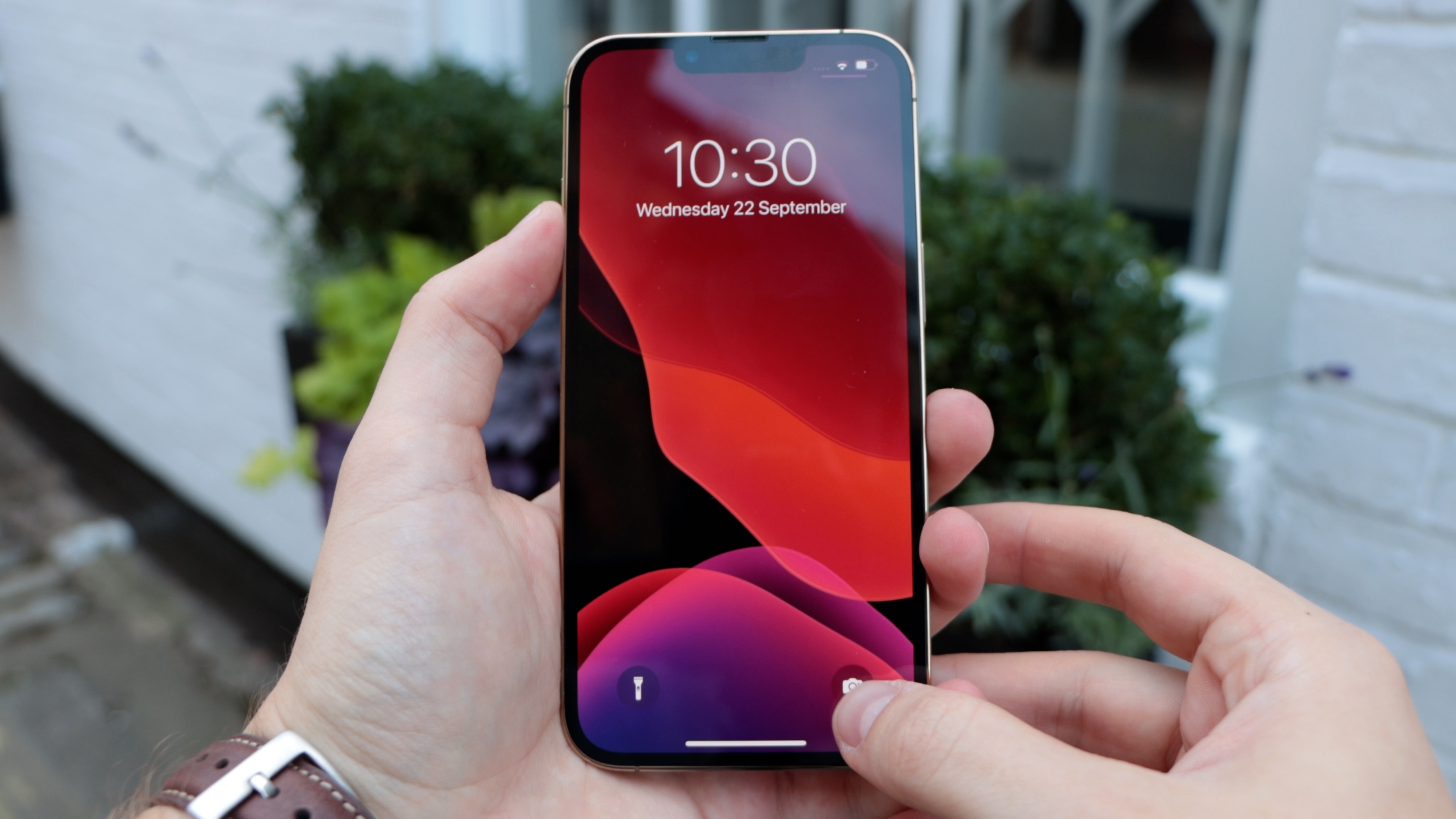What do 10 million fewer iPhone 13 shipments mean?
iPhone 13 shortfall or shortage?

While the iPhone 13 range seemingly launched without a hitch in September, a recent Bloomberg report claimed that Apple was expecting to ship 10 million fewer units of its newest phone line in the coming months. But what exactly does that mean?
There are two perspectives to consider: Apple’s, of course, given that 10 million fewer iPhones potentially means a loss of sales as fewer handsets arrive on physical shop shelves and online store stock. But also consumers, who may conceivably have a harder time buying a new iPhone 13 during Black Friday, Cyber Monday, and through the holiday season.
Lest you immediately worry that iPhone 13 models will be as hard to find as a PS5 or GPU, take heart – this doesn’t seem to be a production shortfall on the level of the global chip shortage. But the lack of information regarding the allegedly 10 million fewer iPhones, which Bloomberg credits to component shortages from parts suppliers Broadcom and Texas Instruments, means even the experts can’t say exactly what the impact will be. That’s especially true since we don’t know how many iPhone 13 units Apple had planned to make.
“It’s never a good idea to read too much into individual supplier reports, and it’s equally impossible to verify what Apple’s production targets were that have now supposedly changed,” Avi Greengart, founder of tech research and analysis firm Techsponential, told TechRadar over email. “That said, this report is entirely plausible: Apple builds iPhones in enormous volumes and there are multiple, cascading faults impacting everyone’s supply chain these days—even Apple is not completely immune.”
Broadly speaking, the culprit for the shortfall is almost certainly related to the impact of the Covid pandemic, which continues to affect industries a year and a half after it began. Specifically, we could be talking about any of a myriad of stops on the way from thinking up an iPhone to getting it in consumer hands, and Greengart’s ‘cascading faults’ could affect anything from resource chains to production and assembly lines to shipping overseas to, finally, loading phones on trucks to line store shelves (physically and digitally).
But there’s a reason you might not see a difference in iPhone 13 availability this holiday season even if there are shortfalls, and it’s entirely because Apple is the juggernaut that it is.

iPhone 13 shortfalls: why you may not notice
If Apple is seeing a 10 million-iPhone shortfall of its planned production, consumers in some regions may not see any impact at all. That’s because the company prioritizes its largest markets, like the US, and allows other areas to feel the brunt, according to Nabila Popal, Research Director at analyst firm IDC.
Get daily insight, inspiration and deals in your inbox
Sign up for breaking news, reviews, opinion, top tech deals, and more.
“Even if there were to be [shortages], the US as a market gets priority because it’s the largest market globally [for Apple sales], accounting for almost a third of all Apple shipments,” Popal told TechRadar over the phone. Instead, markets in Africa or the Middle East or parts of Europe may see fewer iPhone 13 models in stock than expected, if a shortage were to happen.
That’s a big ‘if,’ as Popal was uncertain that a shortage would even happen – when the Bloomberg report came out, the smartphone industry suppliers that IDC chats with disagreed on the reality of the shortage. Even if it did, though, there are ways those companies can make up for supply constraints to ensure minimal impact to sales.
“We haven’t heard anything significant to confirm that [report,]” Popal said. “But even if it were true, it is not necessary this means that there will be a shortage. Because a lot of the companies that were working with Apple said that they’re just going to reprioritize themselves or use inventory that they already had to continue with their production orders and still hit their targets for Q4. And more importantly, the initial target was very aggressive – so even if there is a “reduction” from original plan, it may not impact things too much.”
The uncertainty over the impact is also due to Apple itself, which makes such large-scale orders for parts and production that it ends up commanding higher priority over other companies, Popal said. This might explain why shortfalls in the industry may not hit Apple as hard because the company ends up rather insulated from supply shocks, though smaller companies might end up feeling the impact far more.
And if there is a shortage, would Apple even feel it? During last year’s holiday sales period (Q1 2021), Apple sold a record $65 billion in iPhones, which IDC estimated to account for some 90.1 million iPhones in that period, according to CNBC. Trimming 10 million units from that number, or about 11%, suggests it could have dropped sales by $7.2 billion. That’s nothing to sneeze at, but wouldn’t cripple Apple’s revenue for the quarter – and given Apple has been selling even higher percentages year-over-year throughout 2021, that 10 million shortfall would likely account for an smaller number of total sales.
And there’s a question of whether consumers would balk at lower iPhone supply and look elsewhere: Apple is one of two companies (with Samsung) that commands a brand loyalty among handsets, Popal said. Customers may be upset that they can’t get their iPhone 13 of choice...and just buy it later, offsetting sales.
Regardless, that might make for a more disappointing quarter for Apple, according to Anshel Sag, Principal Analyst at Moor Insights and Strategy.
“This is an unfortunate reality of our current chip shortage and will likely mean that Apple won't be able to beat its last iPhone sales record set in Q4 of last year,” Sag told TechRadar over email. “However I also believe that they will be able to make up for some of that in Q1 and Q2 especially since there isn't necessarily a huge change like there was last year with the addition of 5G in the iPhone 12. Ultimately this will set expectations for investors when Apple doesn't ship record numbers of iPhones this quarter.”

Will this change which iPhone 13 models I can buy?
Should consumers looking to pick up an iPhone 13 during the Black Friday deals season or during the holidays hurry to get what models they can before they’re out of stock?
“I think it will probably have the same kind of difficult availability that people are used to when it comes to an iPhone model being in high demand,” Sag said. “If [consumers] plan ahead for the holidays, they should be able to get one and some models may have better availability than others. But just walking into the store and getting a phone might be more difficult during the holidays.”
And, as mentioned before, the shortfall may not affect all areas equally, with some markets seeing full stock of the various iPhone 13 models and others seeing certain gaps in the range. Perhaps that means fewer of the phone’s more specialized siblings, including the smaller iPhone 13 mini, flagship iPhone 13 Pro, or larger iPhone 13 Pro Max. Or consumers may find the right phone but not the right storage configuration (the iPhone 13 is available in 128GB or 256GB of storage, while the iPhone 13 Pro is available up to 1TB).
“Generally speaking, I would expect it to be harder to find specific configurations in stock than most years, and shipping times may be longer,” Greengart said.
- iPhone 13 vs iPhone 13 Pro: Is this the year to go Pro?
David is now a mobile reporter at Cnet. Formerly Mobile Editor, US for TechRadar, he covered phones, tablets, and wearables. He still thinks the iPhone 4 is the best-looking smartphone ever made. He's most interested in technology, gaming and culture – and where they overlap and change our lives. His current beat explores how our on-the-go existence is affected by new gadgets, carrier coverage expansions, and corporate strategy shifts.
